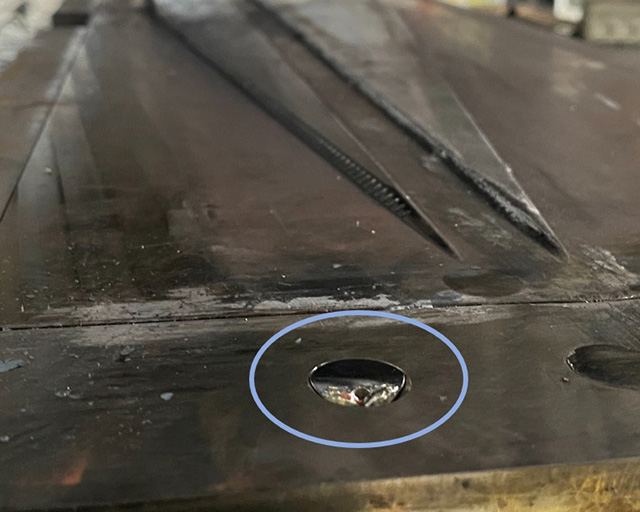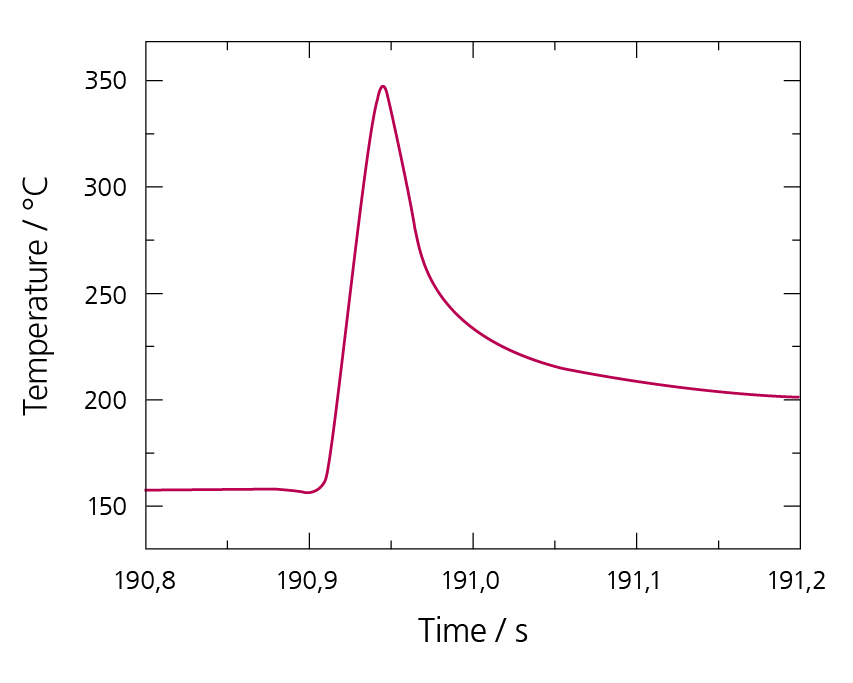
Sensor inserts for contact-temperature measurement in cross wedge rolling process

In the investigation of novel processes for the manufacture of hybrid semi-finished products made from steel and aluminum, the temperature control of the workpiece is of major importance for the resulting component quality. At the Fraunhofer IST, in a project in collaboration with the IPH - Institut für Integrierte Produktion Hannover gemeinnützige GmbH (IPH), thin-film sensor inserts have therefore been developed for integration in a cross-wedge rolling process in order to measure the high contact temperatures during forming. In-process measurement has significant advantages compared to conventional measurement methods such as pyrometry or thermocouples, particularly in terms of accuracy and temporal resolution.

Sensor integration
With the aim of being able to measure the temperature at the tool surface in contact with the workpiece, special sensor inserts have been developed in the form of a so-called measuring funnel, which is integrated into the surface of a flat-die tool. For the read-out of the sensor, the cables can be led out of the back of the machine.
Thin-film system
The measuring principle of the sensor is based on a wear-resistant thermoresistive thin-film system, which is deposited on the head of the measuring funnel. A chromium layer with a thickness of 250 nm is deposited on an insulating base coating consisting of an aluminum oxide layer (Al2O3) with a thickness of approx. 4 μm. In a second step, a sensor structure is arranged in a meandering pattern on the measuring funnel by means of photolithography and subsequent wet-chemical etching. The meandering structure is thereby positioned on the horizontal funnel surface, which is in direct contact with the workpiece. The conductor paths for reading out the sensor in four-wire technology are led via a curvature into a chamfered, unloaded contact area. For the cable routing, a channel is recessed into the neck of the funnel. Finally, the thin-film sensor is provided with a second Al2O3 layer of approx. 3 μm in thickness, which protects the sensor from wear.

Contact-temperature measurement in cross-wedge rolling process
The schematic diagram above shows the sensor positions and the intermediate steps of the cross-wedge rolling process. It can be seen that depending on the material, the workpiece was heated to different degrees before the process. The temperature curve when rolling over the sensor at position A is illustrated in the adjacent diagram. It was possible to show how the sensor can successfully measure and record the temperature in the load zone despite the short contact time with the workpiece.
Outlook: Digitalization and monitoring of production processes
The solution shown here for sensor integration in large machines or tools is an attractive possibility for advancing the digitalization and monitoring of production processes. Through the utilization of sensor inserts, thin-film sensor technology can be implemented for the in-situ detection of temperatures and pressures without the necessity of the complex and cost-intensive coating of entire tools. Furthermore, this approach offers the possibility of improving and further developing the sensor technology through simple replacement and can be applied, in addition to the process shown here, to a multitude of other production processes such as hot and cold forming or plastic injection molding.
The project
These results were achieved in collaboration with the IPH within the framework of the project “Inkrementelle Umformung hybrider Halbzeuge mittels Querkeilwalzen” (Incremental forming of hybrid semi-finished products by means of cross-wedge rolling) (SFB 1153 – Sub-project B1 – Querkeilwalzen), funded by the Deutsche Forschungsgesellschaft (German research association).

